World Health Organization Releases List of Deadliest Pathogens
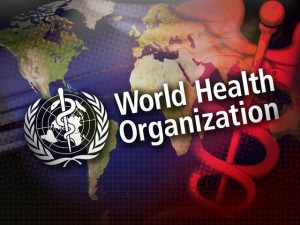
The World Health Organization released a list of what they consider to be the deadliest pathogens along with guidelines on how to better prepare for an outbreak. Part of the reason that these pathogens were named is to encourage healthcare and emergency planning officials to take a more proactive stance in the wake of last year’s Ebola outbreak in Africa.
Some of these pathogens are well-known, such as Ebola, MERS, SARS and the H1N1 virus. However, there are also a few more that are just as deadly, and there is little that can be done at this stage to prevent a pandemic if an outbreak were to occur. The risk of humanity facing a global health crisis from the transmission of disease is greater than ever, and unfortunately this meeting did little to restore confidence in the ability for officials to keep us safe.
In fact, some of the information released by the WHO indicates that we are teetering on the brink of disaster. Not only are these pathogens alive, well and spreading, but most have no vaccine. Not only that, but run of the mill doctors and hospitals are not equipped to treat or contain the spread of disease if they did invade the population at large.
With the ease of movement from one corner of the world to another, a delay in the onset of symptoms for many of these diseases, and a failure of technology to detect infections, we are setting the stage for a public health crisis the likes we’ve never before seen.
Here are the pathogens that global health officials are most concerned about:
Crimean-Congo Hemorrhagic Fever
This virus is predominately centered across a broad swath of Africa, the Middle East and Asia, south of the 50th parallel north. It is transmitted by tick bites from infected animals, with the exception of birds, most of which have an immunity to the virus. It has up to a 40% mortality rate in humans, and there is no cure or vaccine. Most people are exposed either by tick bites after they have bitten an infected animal, and humans have also become infected while slaughtering animals for food and coming into contact with blood and bodily fluids. The virus can also be transmitted from human to human through contact with blood and bodily fluids as well.
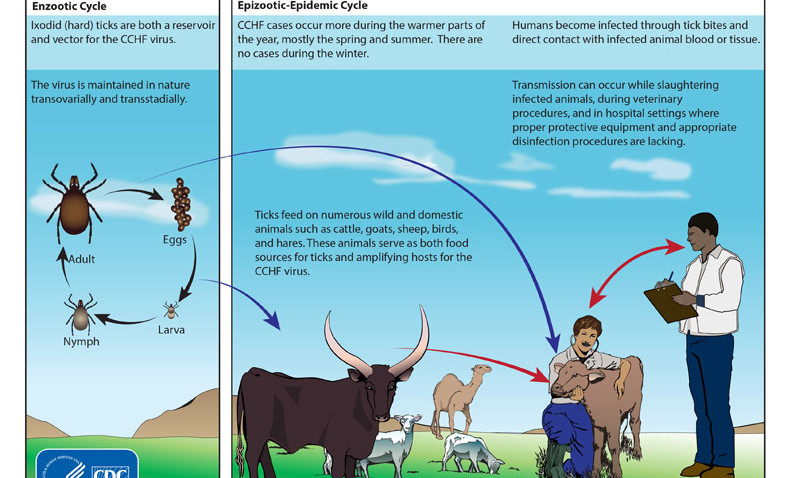
Incubation periods can range from a few days to two weeks, and symptoms include fever, muscle aches, stiffness in the neck, sensitivity to light, sore and swollen eyes as well as nausea, vomiting, diarrhea and rapid heart rate. As the disease progresses, lethargy, depression, liver enlargement, enlarged lymph nodes, kidney or pulmonary failure and death generally occurs within two weeks.
Marburg Virus
This nasty virus first reared its ugly head in Germany in the 1960’s and is still a major threat today. It is primarily transmitted by bites from infected bats and certain monkeys, and workers in caves and mines are at highest risk. However, it can take up to three weeks before symptoms appear. This makes human to human transmission very easy as the virus can be spread through casual contact as well as the exchange of blood and bodily fluids.
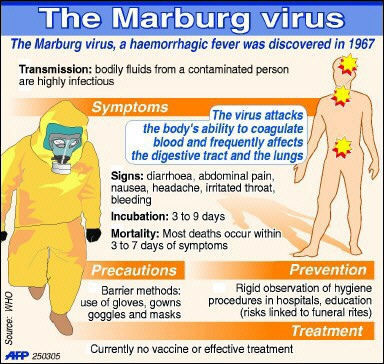
Symptoms include a rapid onset of high fever, severe malaise, along with muscle aches, watery diarrhea, abdominal cramps, nausea and vomiting. Patients with advanced stages of the disease develop ghostly appearances with white skin, sunken and dark eyes and severe hemorrhaging out of various orifices. Mortality can be as high as 88%, and there is no cure or vaccine.
Lassa Fever
Lassa fever is caused by a virus that is transmitted through contact with urine and feces from rodents. The incubation period can be anywhere from one to three weeks, and symptoms generally appear gradually. Swollen throat, high fever, weakness, chest pain, headaches, coughing, vomiting, diarrhea and facial swelling. Severe cases include fluid buildup in the lungs, coughing up blood, blood coming out of the nose, mouth, eyes and in urine are all common. Shock, seizures, disorientation, coma and death are common in severe cases. Deafness is also a possibility.
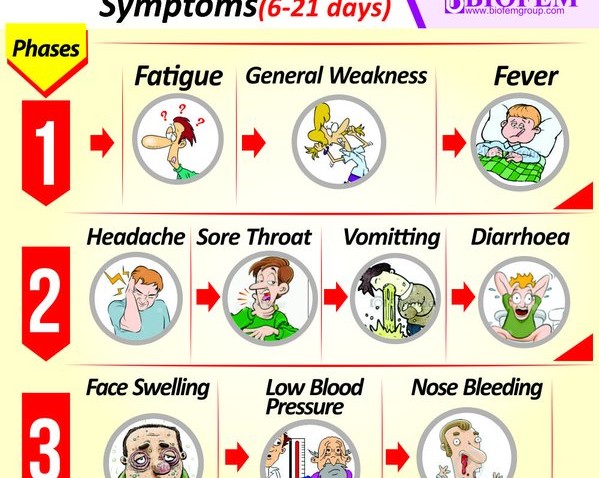
The good news is that Lassa fever has a very low mortality rate, and only a small percentage of those who are infected will ever develop symptoms. Most patients are able to ride out the infection as the disease runs its course over a few weeks. However, about one in five infections will result in severe forms of the disease. Isolation, hydration and supportive care are normally what is offered to infected patients.
Nipah Virus
Outbreaks of the Nipah virus occur on an annual basis in Bangladesh and India, but outbreaks have been noted in most of SE Asia as well. About one in three infected patients die from the disease. Transmission in SE Asia is most common from coming into contact with infected pigs. Outbreaks in India and Bangladesh stem from consuming raw sap from date palms and contact with bats. The disease is most commonly spread from human to human contact by the patient and their immediate family, housemates or caregivers.
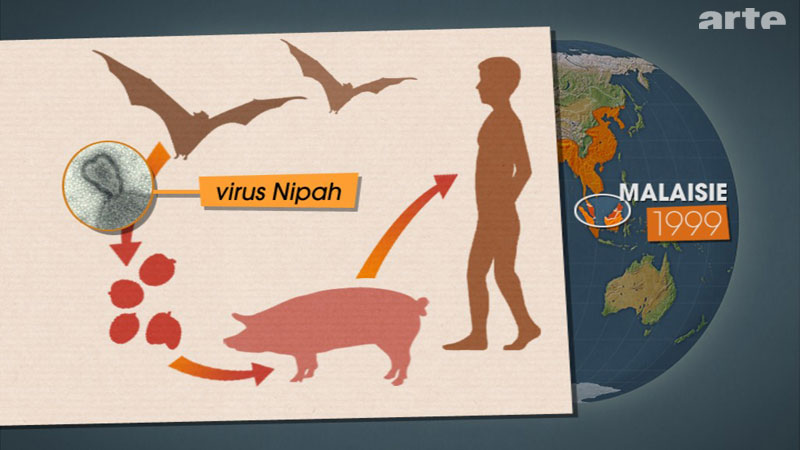
Nipha causes severe swelling of the brain and symptoms will begin to appear between a few days to two weeks after exposure. Symptoms develop rapidly and include fever, headache, drowsiness, disorientation and confusion. Patients who experience severe reactions to this infection can fall into a coma and die within 24-48 hours after the onset of symptoms. Other patients form severe neurological and pulmonary problems.
Rift Valley Fever
This virus is primarily transmitted between livestock, but humans who handle animals have become infected. Fortunately, there has been no evidence of human to human transmission to date. However, the virus is spreading from its origins in Africa to the Middle East, and the first cases have been reported in Europe not long ago. Most transmissions occur from the handling of animals which includes coming into contact with blood and bodily fluids as well as from drinking unpasteurized milk from infected animals.
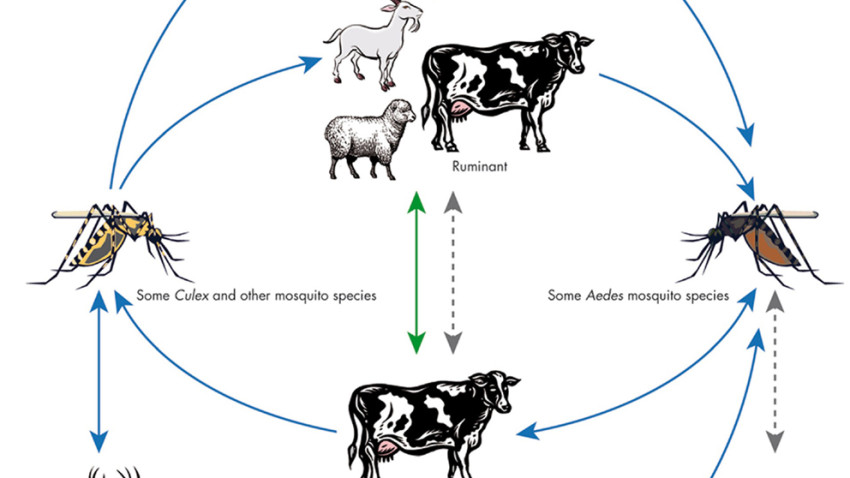
Fortunately, the mortality rate in humans is less than 1%, and most patients will develop flu like symptoms within a few days of exposure before the virus runs its course within a week. Severe and fatal cases center on hemorrhagic fever and jaundice of the liver. Vomiting of blood, blood in the stool, bruising of the skin as well as face and gums are common in these cases. There is no vaccine. The threat of this virus is centered more on the decimation of the livestock industry as infected animals tend to abort fetuses in addition to dying themselves. However, concerns arise as the disease spreads, and the potential for mutation becomes more prevalent.
MERS, SARS and Ebola are also on the list of potentially game-changing viruses that can quickly spread throughout the world. The warning issued by the WHO is intended to raise awareness and help the medical community to prepare for a potential outbreak. However, this alert also indicates that health officials are completely ill-equipped to contain, manage and fight these diseases.
Therefore, this should raise concerns around the world as an outbreak can quickly overwhelm healthcare systems and force mass quarantines. Since there are no vaccines for these diseases, the only way to stop them from spreading is to isolate the sick, monitor those who may have been exposed and hope for the best.
It also serves as a reminder that anyone who develops flu like symptoms or looks visibly ill should seek prompt medical attention to avoid the potential for passing diseases along to others. Being vigilant, using basic protections such as wearing a face mask, gloves and avoiding direct contact with bodily fluids can also reduce the chance of catching a viral infection, whether it is one of these or simply a case of the flu.




